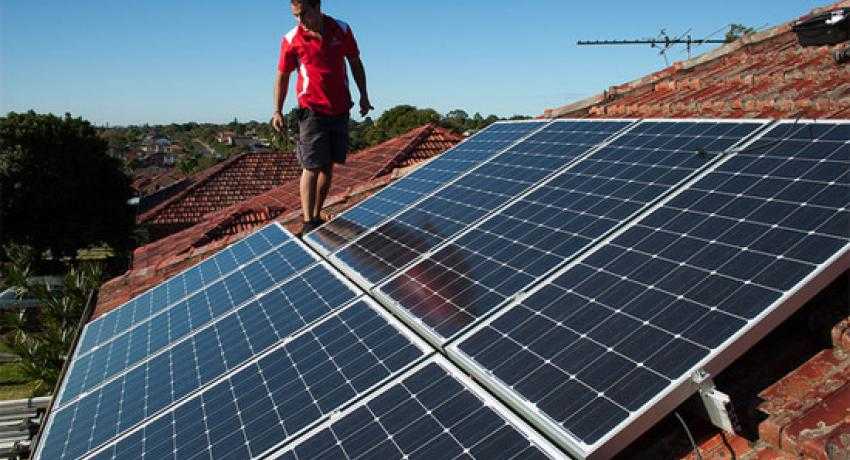Rooftop solar pushes solar capacity to new high
Solar power surpassed 20 gigawatts of installed capacity in the United States during the second quarter of 2015 – thanks, in large part, too residential rooftop solar installations.
And that capacity could almost double again in the next year, according to a recently released report from the Solar Energy Industries Association. SEIA projects an additional 18 gigawatts of solar will be installed by the end of 2016. A huge portion of that will be small rooftop solar projects.
Residential rooftop solar installations are largely responsible for the surge in solar capacity across the country. The second quarter saw a 70 percent year-over-year increase in residential rooftop solar installation.
The continuing growth is largely thanks to state-level incentives. More states are participating in the boom, with 10 states installing more than 10 megawatts in 2014. That's a substantial increase over the four states that installed more than 10 megawatts in 2013.
While rooftop solar installation is on the rise, industrial solar installations have dropped by 33 percent year-over-year. SEIA anticipates an uptick in industrial installations through the end of 2015, but industrial solar will probably not keep pace with the growth seen in the residential market. Residential solar is growing faster and faster despite declining incentives. It has emerged as the darling of the solar industry.
And for good reason. New and creative ways to finance rooftop solar have resulted in cost savings even for those who can't or don't want to shell out a lot of cash for solar panels up front. Between leasing, power purchase and new financing options, residential solar has become accessible and financially viable to a great number of home and business owners.
Five states account for nearly three-fourths of the nation’s solar capacity. California leads the pack with 3.2 gigawatts. High energy prices and strong state incentives bolster the rooftop solar industry there. If financial incentives for rooftop solar installations are allowed to lapse, growth will likely slow due to industry uncertainty, according to the SEIA.
But disappearing incentives will not squash the industry and will likely not stop growth, just slow it. In California 94 percent of residential installations did not use solar incentives at all – proof that the industry can continue to thrive in certain markets even without incentives. As prices for solar drop and demand increases, solar may reach 14 percent of the country’s total electric capacity, according to the SEIA report.




